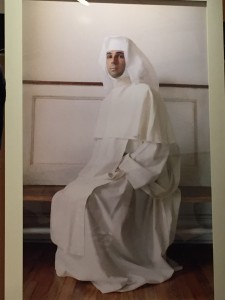I had the pleasure to visit the Johnson Museum and revel in some of it’s beautiful artwork. It’s remarkable to have such an amazing collection here on campus, free and open to student use, and I highly encourage checking it out on the weekends, or even as a quick study break! It’s fun to let the mind wander over the flashy or subtle beauties of a work of art, whether it be a painting, sculpture, or some other sort of creative display.
There were many remarkable pieces of artwork, but I want to focus on two very thought provoking pieces. The first is the walking man. Tall, slender, and mysterious, this man, though still for all of eternity, never ceases on his journey forward…but to what end? Where is this man walking so intently? Will he ever arrive at his destination; will he ever cease his search? What motivates him to walk in this way? His emotions are clouded: the artist does not reveal any expression on his face. Also interesting is the walking man’s slenderness, his fragility. Despite this, he soldiers on.
Related to the greater concept of life and purpose is this painting by the Dutch painter David Bailly entitled “Vanitas”. Aptly named, it speaks of the futility of wealth and vanity. Based on the imperial period in which it was created, a young slave/servant boy ponders the meaninglessness of his late master’s wealth. The fancy frills are so temporal, as life wilts like the flowers, and is easily snuffed out like a candle. The master’s picture, pointing to his skull, is a solemn reminder that life is short: too short to be wasted on the trivial things that money can buy. Relating this back to the man walking, what is the purpose that we as humans should strive for? It’s a question that everyone must answer.



